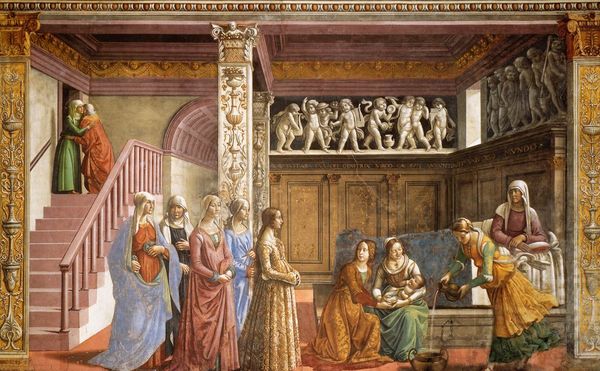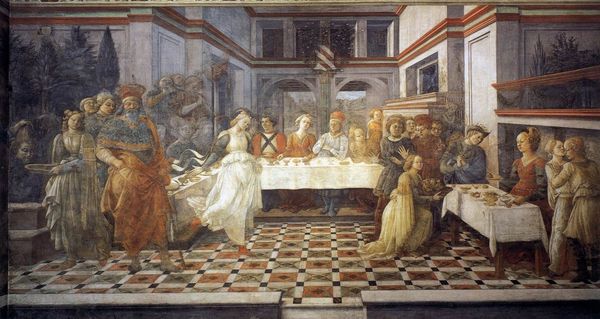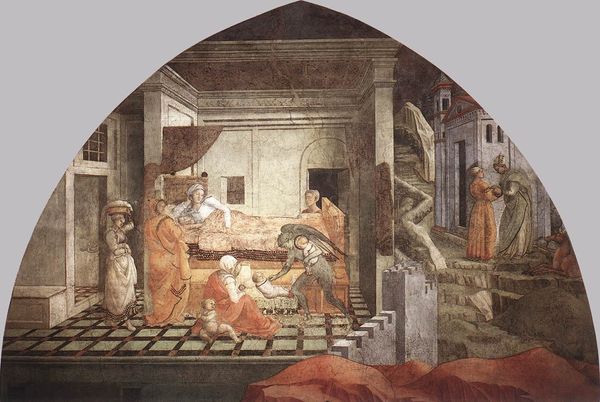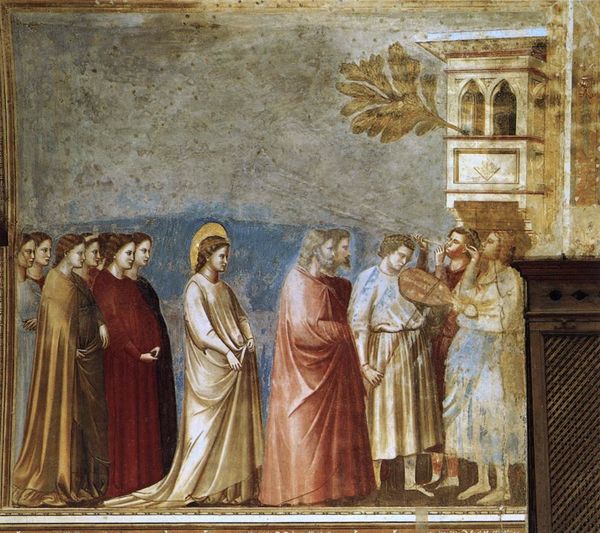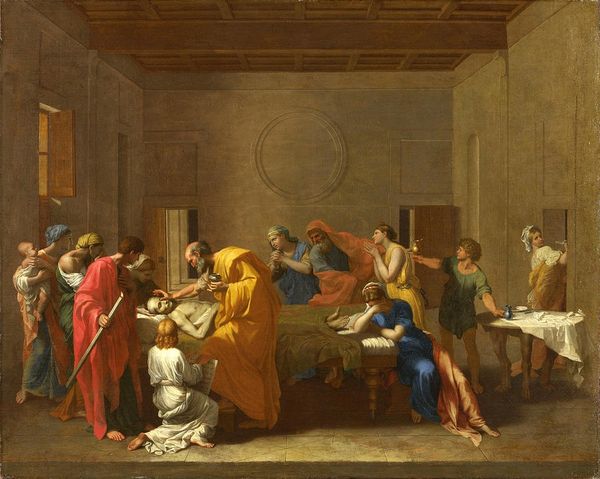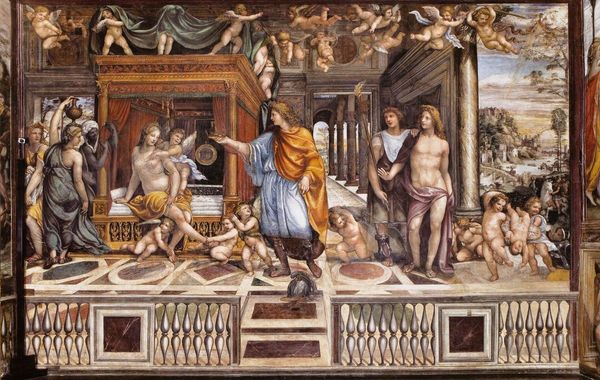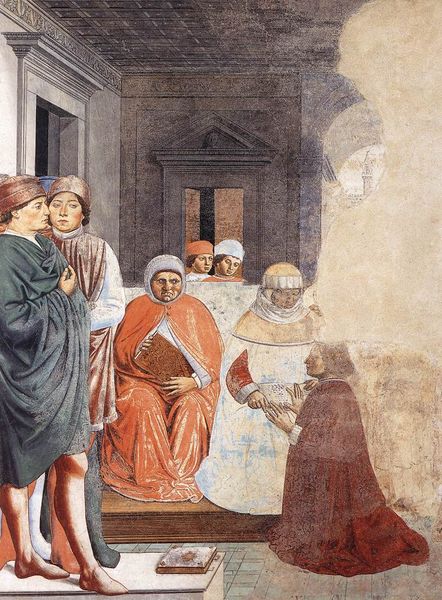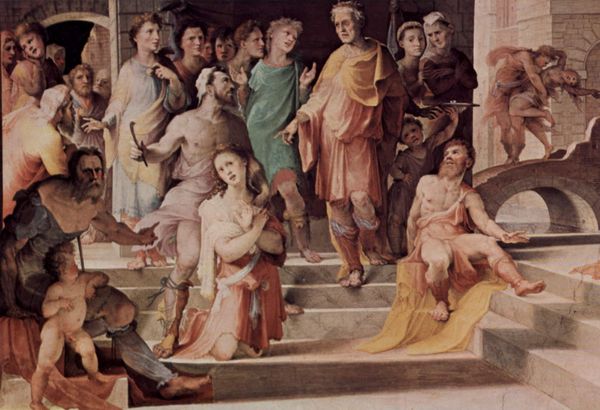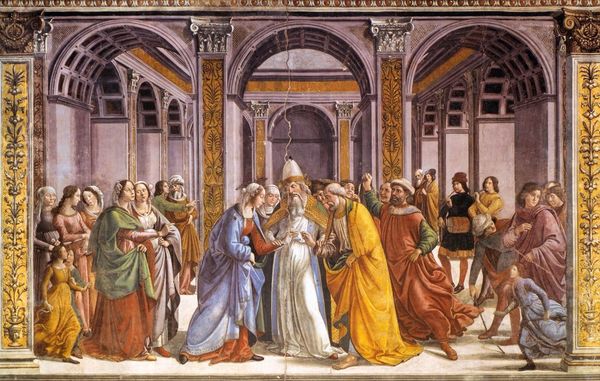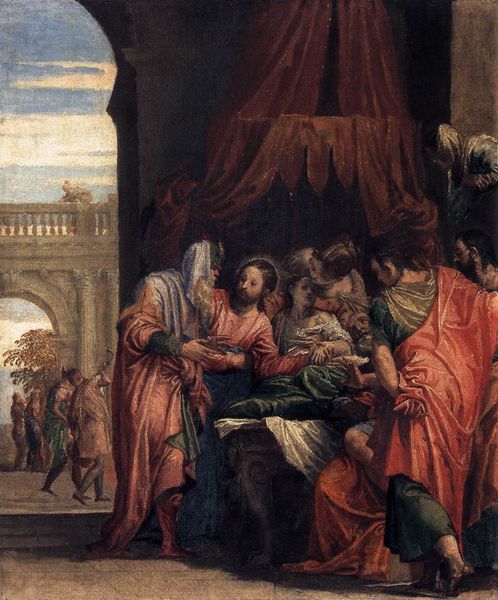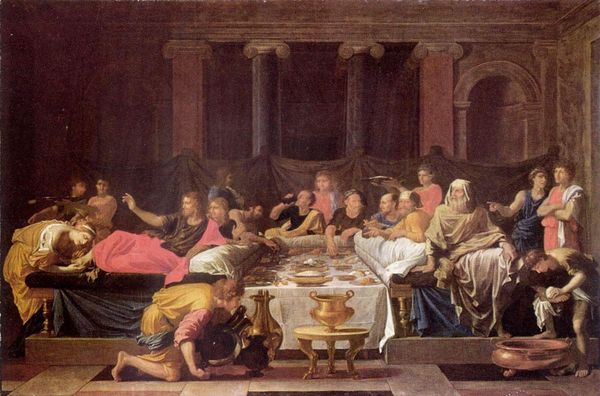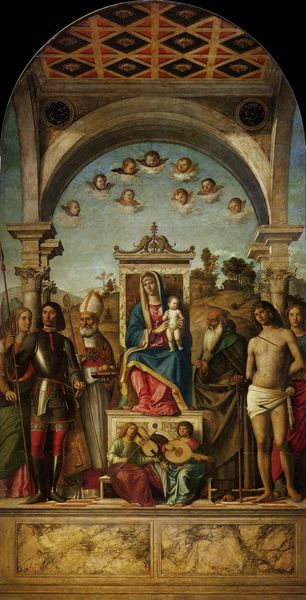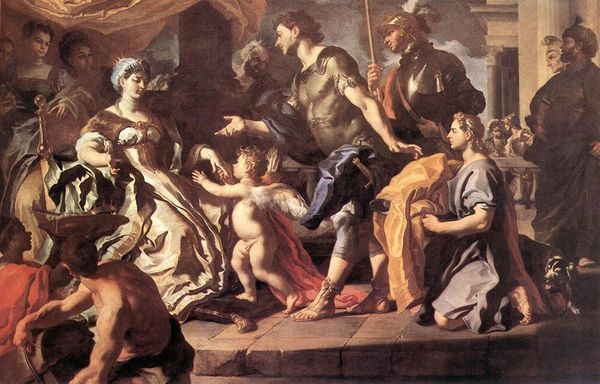
The Birth of St. John the Baptist 1490
0:00
0:00
domenicoghirlandaio
Santa Maria Novella, Florence, Italy
fresco
#
portrait
#
narrative-art
#
sculpture
#
figuration
#
historic architecture
#
fresco
#
traditional architecture
#
underpainting
#
christianity
#
genre-painting
#
history-painting
#
italian-renaissance
#
historical building
#
christ
Copyright: Public domain
Curator: Here we see Domenico Ghirlandaio's "The Birth of St. John the Baptist," a fresco dating back to approximately 1490, situated in Santa Maria Novella, Florence. Editor: It’s a strikingly serene scene, isn’t it? A large, airy room bathed in soft light. But I’m immediately drawn to the texture of that faded green tapestry-like backdrop behind the bed – it feels so immediate, so real, against the crisp precision of the architecture. Curator: The work depicts a key biblical moment, set within the opulent confines of what would have been a very recognisable domestic setting for Florentine viewers. Note how the religious narrative is interwoven with scenes of everyday life for the wealthy. Editor: Exactly! It’s this mingling of the sacred and the quotidian that fascinates me. Look at the detail in the textiles, the rich colors, the folds of the clothing. You can almost feel the weight of the fabric, imagine the process of its production. These were valuable, traded commodities; markers of wealth, but also of the meticulous labor of dyers, weavers... Curator: Absolutely. And that richness would have sent a very clear message. Frescoes such as this were powerful displays of wealth and status by the patron family, the Tornabuoni, reinforcing their importance within Florentine society. They showcase the humanist interest in domestic life as much as in the religious story itself. Editor: Consider the materials themselves – the pigments, the plaster…all meticulously applied, layered and surely underpainted to create the vibrant effects. These aren't just colors; they're minerals, ground and transformed. We're seeing layers of artistry and labour coming together in one place. It would take real human power and mastery to produce it, not something easily discarded. Curator: The narrative context matters too, of course. Ghirlandaio was tasked with illustrating the lives of both St. John the Baptist and the Virgin Mary, which held huge public significance for Florence at this time, with St. John serving as its patron saint. These visual hagiographies reinforced both religious belief and civic pride. Editor: For me, though, what persists is the understanding of the physical reality embedded within that story – the labour and value embodied in every element of its production. The very opposite of how a religious fresco should be approached. It gives us more than a sacred scene; a scene of daily labour for elites and other tradesman of Florence. Curator: It's a testament to the richness of this artwork, the depth of historical and material narrative layered into the artwork itself. Editor: Indeed. It’s a vibrant material expression that provides not just narrative insight, but shows all levels of a 15th century Italian life.
Comments
No comments
Be the first to comment and join the conversation on the ultimate creative platform.
